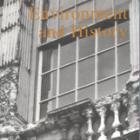Eklund, Mats, Bo Bergback, and Ulrik Lohm. “Historical Cadmium and Lead Pollution Studied in Growth Rings of Oak Wood.” Environment and History 2, no. 3 (Oct., 1996): 347–57. doi:10.3197/096734096779522284. Time-defined oak wood segments and soil samples were used as a source of information on the cadmium and lead pollution process induced by the emissions that occurred from 1726 to 1840 around a Swedish alumworks. Trees growing during the time of the emissions contained elevated levels of both cadmium and lead, probably as a result of increased metal concentrations in the atmosphere. Younger trees, which started their growth after the emissions ceased contained no elevated levels of cadmium or lead. The only exception was one tree where the lead concentration of the soil was about 1700 mg/kg in the 10–20 cm layer. A conclusion that can be drawn is that a relatively small increase in the Cd/Pb content of the atmosphere can produce a substantial increase in the Cd/Pb concentrations in the wood. On the other hand, it takes much more Cd/Pb in a soil to produce similar concentrations of Cd/Pb in wood. The lead chronologies of some young trees in the immediate vicinity of the alumworks illustrate the dilution of lead in the environment, displaying decreasing lead concentrations over time. There are still, however, substantial amounts of lead present in the area shown both in the soil and the wood analysis, thereby again emphasising the long duration of lead pollution of an area. All rights reserved. © 1996 The White Horse Press
"Historical Cadmium and Lead Pollution Studied in Growth Rings of Oak Wood"
Eklund, Mats, Bo Bergback, and Ulrik Lohm | from Multimedia Library Collection:
Environment and History (journal)


